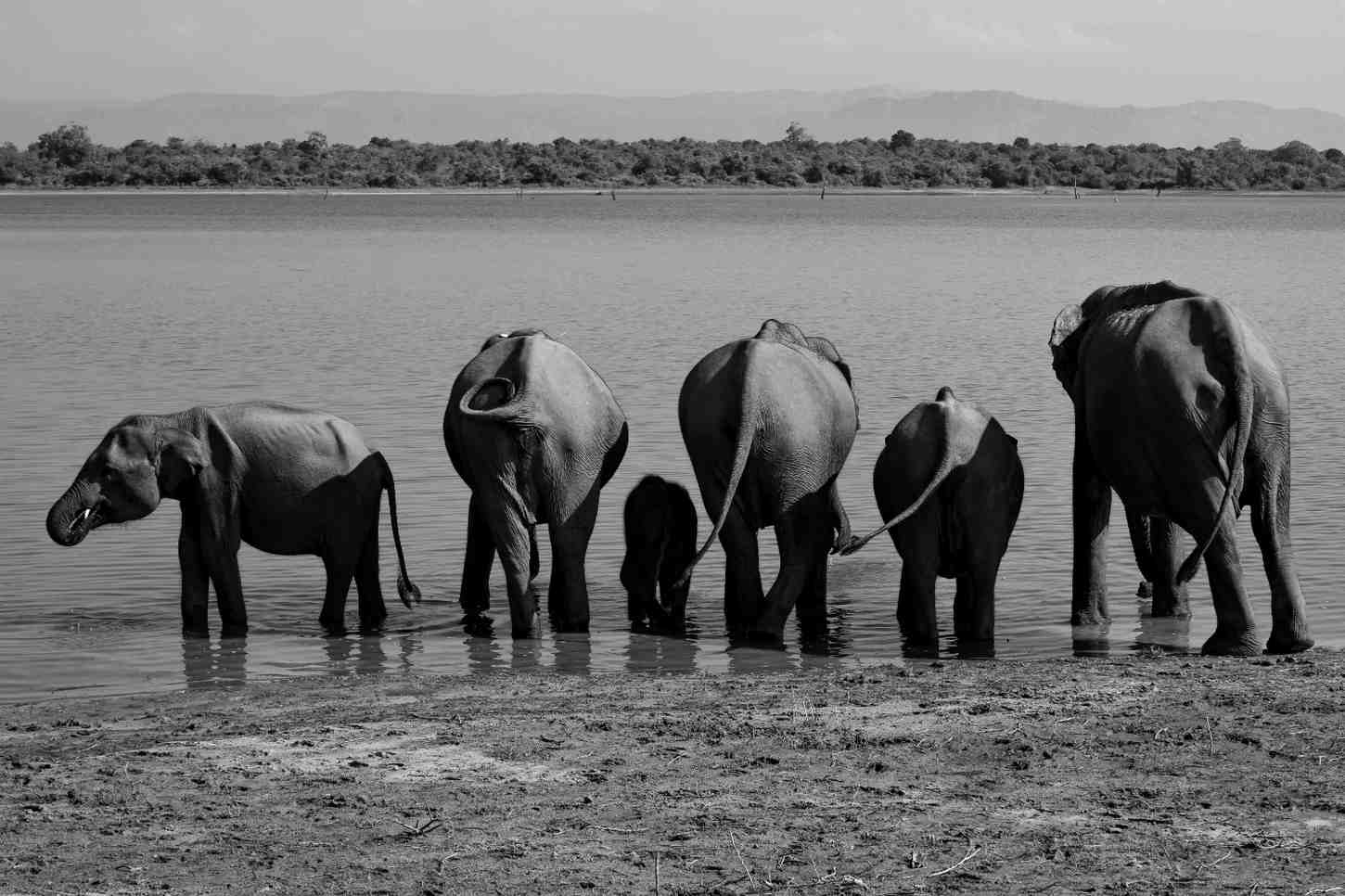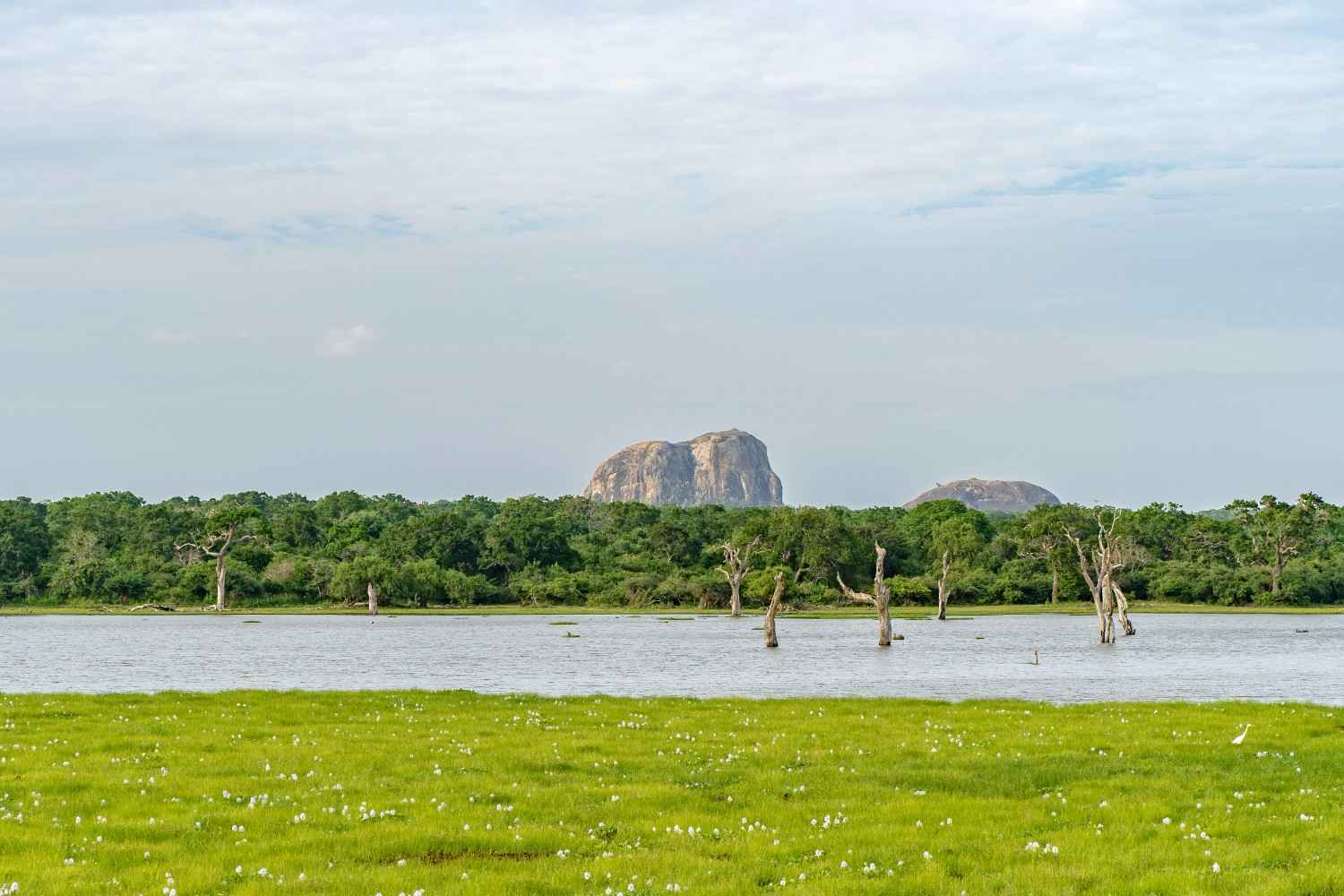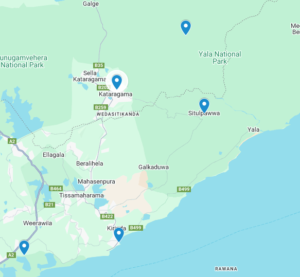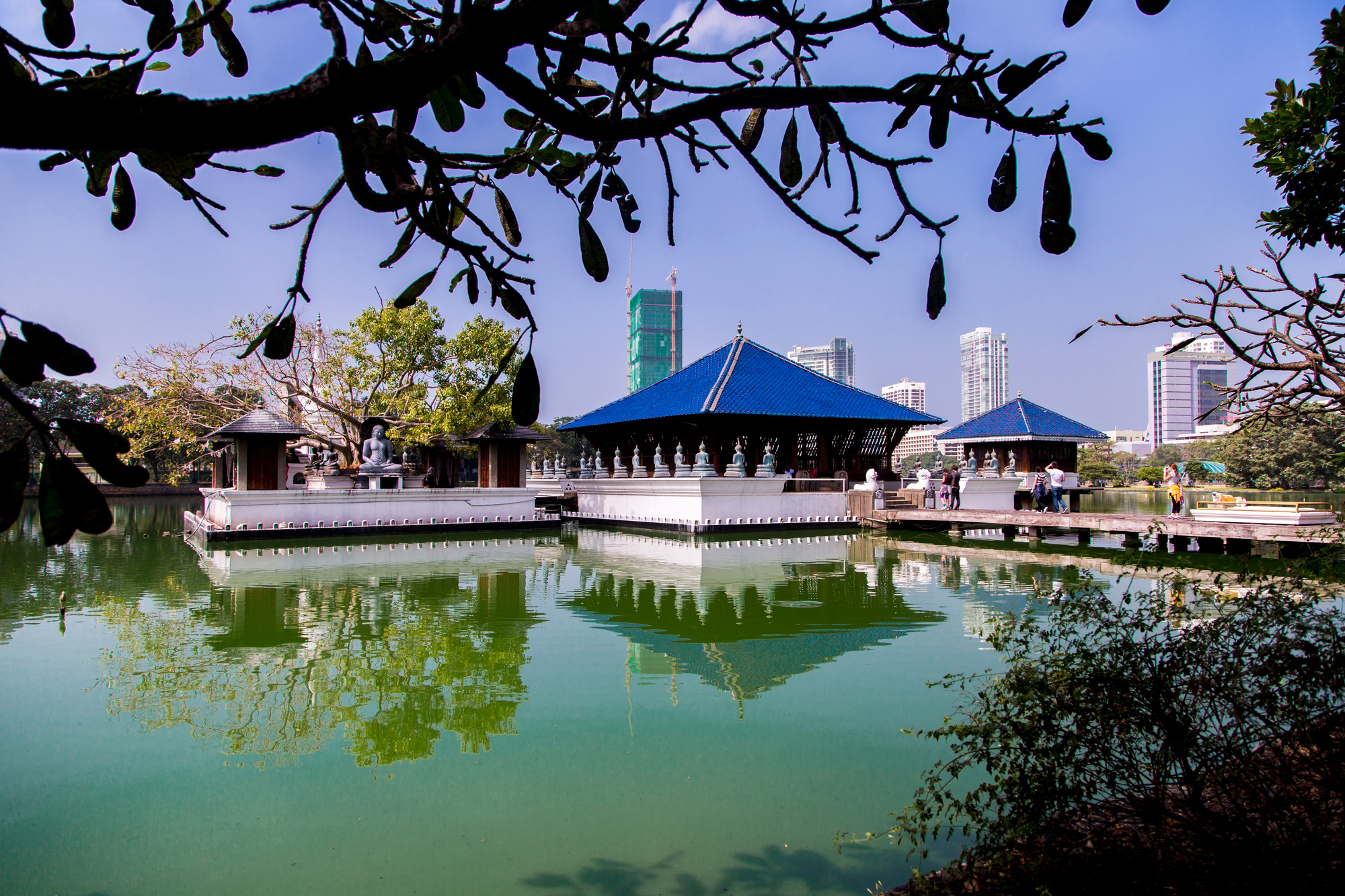Introduction
Tucked away on Sri Lanka’s southeastern shoreline, Yala National Park offers a captivating glimpse into the island’s incredible biodiversity and scenic wilderness. Covering an area of more than 979 square kilometers, it ranks as the country’s second-largest national park and serves as a prominent destination for wildlife lovers and nature seekers alike. The park features a rich variety of landscapes—from scrublands and wetlands to thick forested areas—creating vital habitats for countless species and underscoring its ecological importance.
The park’s reputation as a premier wildlife destination is largely attributed to its astonishing leopard population, which is recognized as one of the highest in the world. This captivating aspect draws hundreds of visitors annually, eager to observe these elusive big cats in their natural environment. However, Yala is not just about leopards; the park is home to a plethora of wildlife species, including elephants, sloth bears, and a wide variety of birds, making it a sanctuary of ecological diversity.
Yala National Park is more than a location; it is an experience that invites adventurers to traverse its rich landscapes. Visitors can engage in exciting jeep safaris that allow for close encounters with the diverse wildlife and breathtaking scenery. The thrill of spotting a leopard resting in the shade or witnessing herds of elephants frolicking in the waterholes is an adventure that leaves an indelible mark on the hearts of those who visit. As we delve deeper into this guide, we will explore the marvels of Yala, providing insights into its ecosystems, wildlife, and the experiences it offers to those who seek the allure of nature’s wonders.
What Makes Yala Special

Yala National Park, located in the southeastern region of Sri Lanka, is renowned for its remarkable wildlife and unique ecosystems that set it apart from other wildlife destinations. One of the main attractions of Yala is the impressive density of leopards, especially in Block 1, where these elusive big cats are frequently spotted. This high concentration provides a unique opportunity for wildlife enthusiasts to observe these magnificent creatures in their natural habitat, making Yala one of the premier locations globally for leopard sightings.
In addition to leopards, Yala is home to an extensive variety of other wildlife, which contributes to its rich biodiversity. Visitors can encounter majestic elephants roaming the park, sloth bears foraging for food, and crocodiles basking by the waterways. Yala is also a haven for birdwatchers, with over 200 recorded species, including endemic and migratory birds that thrive within its varied ecosystems. This diversity of flora and fauna allows for a captivating experience, as one navigates through the park’s landscapes.
The ecological appeal of Yala is enhanced by its distinct habitats, which include dry monsoon forests, coastal lagoons, and rocky outcrops. These unique environments support the wildlife and create a smooth transition between different habitats. The coastal lagoons, for instance, not only attract various bird species but also host a range of aquatic life, connecting the flora and fauna of the park harmoniously.
Furthermore, Yala National Park possesses significant cultural value, with historical landmarks like the ancient Buddhist ruins of Sithulpawwa. These sites provide insight into the region’s rich heritage and add another dimension to the experience of exploring the park. Thus, Yala National Park stands out as a true wildlife gem, combining natural beauty with ecological significance and cultural richness.
The Safari Experience
Embarking on a safari in Yala National Park offers an unparalleled opportunity to witness the diverse wildlife of Sri Lanka in their natural habitat. During a typical safari, visitors can choose between morning and afternoon game drives, each presenting unique advantages. Morning drives often afford cooler temperatures and heightened animal activity, while afternoon excursions are characterized by stunning sunset views and the chance to spot nocturnal animals as they emerge.
The best times to visit Yala are generally during the dry season, which stretches from February to July. During these months, animal sightings, particularly of the elusive leopard, significantly increase as wildlife congregates around dwindling water sources. It is vital for guests to arrive promptly at the park’s entrance as park regulations mandate strict adherence to scheduled driving times, commencing at 6 AM and 2 PM for morning and afternoon safaris, respectively.
To maximize the experience, visitors are encouraged to opt for guided jeep safaris. Licensed tour guides not only navigate the terrain but also enhance the experience with their in-depth knowledge of the local flora and fauna. Typically, jeep costs range from USD 50 to USD 100, depending on the time of year and vehicle capacity. It is advisable to confirm all expenses beforehand with a reputable tour provider to avoid any unforeseen charges.
For families and wildlife photographers, preparing adequately is essential. Packing binoculars and a camera with a zoom lens can significantly enhance the safari experience. Additionally, bringing along essentials such as bottled water, sunscreen, and hats will ensure comfort throughout the safari. Proper preparations will allow visitors to immerse themselves in the breathtaking splendor of Yala National Park, creating memories of a lifetime amidst the rich tapestry of wildlife.
Responsible Wildlife Watching

When visiting Yala National Park, embracing responsible wildlife watching is essential for both the visitor experience and the preservation of the environment. Ethical tourism practices play a crucial role in maintaining the natural habitat of the park’s diverse wildlife, and adhering to these principles ensures that future generations can continue to enjoy these remarkable animals.
One of the foremost guidelines for ethical wildlife observation is to maintain a respectful distance from animals. Approaching wildlife too closely can induce stress and alter their natural behaviors, negatively impacting their wellbeing. Visitors are encouraged to use binoculars and cameras with zoom lenses to appreciate the beauty of the wildlife without intruding into their space. This minimizes disturbance while allowing for an enriching experience.
Another important aspect of responsible wildlife watching is avoiding littering and ensuring that all waste is properly disposed of. Litter not only detracts from the natural beauty of the park but can also pose serious risks to wildlife. Animals may ingest garbage or become injured due to human waste, affecting the ecological balance. Visitors should also refrain from feeding animals, as this can disrupt their natural foraging habits and lead to reliance on human food sources.
Furthermore, it is crucial not to pressure drivers to chase or approach animals aggressively. Such actions can pose risks to both wildlife and visitors, as stressed animals may react unpredictably. Instead, travelers should adhere to park regulations and respect the guidance of local drivers and naturalists who prioritize responsible wildlife viewing practices. Utilizing the expertise of local guides not only enhances the experience but also supports conservation efforts and local communities.
In sum, engaging in responsible wildlife watching not only benefits the animals and their habitats but also contributes to a fulfilling and memorable experience in Yala National Park. By making conscientious choices, visitors help preserve this remarkable ecosystem for years to come.
Where to Stay Near Yala
When planning a visit to Yala National Park, selecting the right accommodation can greatly enhance your experience. The options available near the park cater to various budgets and preferences, ensuring that every traveler can find a suitable place to rest after a day of exploring the park’s wildlife.
For those seeking a luxurious experience, consider the Wild Coast Tented Lodge, where guests are treated to premium amenities and stunning views of the surrounding landscape. This eco-friendly resort integrates seamlessly with nature, allowing visitors to enjoy comfort without compromising environmental sustainability. Another high-end choice is Jetwing Yala, which offers elegant rooms and an array of facilities, all set in a picturesque location near the coast. Both of these establishments focus on providing a unique experience while ensuring conservation efforts are respected.
If you prefer a mid-range option, Cinnamon Wild Yala presents an ideal choice. Known for its close proximity to the national park and comfortable accommodations, this lodge provides an excellent balance of value and comfort. Guests can enjoy afternoons by the pool or partake in guided wildlife tours arranged by the hotel.
For budget-conscious travelers, Tissamaharama and Kataragama offer several guesthouses that provide basic yet comfortable lodging options. These areas are just a short drive from Yala National Park, making them practical for visitors who intend to explore the park. Staying in local guesthouses not only supports the community but also allows for an authentic Sri Lankan experience. Additionally, some eco-lodges in the region focus on sustainable tourism practices, making them excellent choices for environmentally conscious travelers.
In conclusion, the range of accommodations near Yala National Park ensures that travelers of all kinds can find a place that suits their needs, enhancing their wildlife adventure with comfort and local flavor.
Other Attractions Nearby
Yala National Park, while famed for its diverse wildlife and scenic landscapes, is surrounded by a number of other attractions that enhance the overall travel experience. Notable among these is the Kataragama Temple, a revered site of worship that holds great significance for Buddhists, Hindus, and Muslims alike. This multicultural religious site draws pilgrims from across the island, making it a fascinating visit for those interested in the spiritual heritage of Sri Lanka. Visitors can observe the vibrant rituals and ceremonies performed by devotees, providing insight into the country’s rich tapestry of faiths.
Another remarkable site in proximity to Yala is the ancient monastic complex of Sithulpawwa. Nestled within the lush greenery, this archaeological site features well-preserved rock temples and ancient murals that reflect Sri Lanka’s historical narrative. Sithulpawwa is believed to date back to the 2nd century BC and served as a significant monastic center for Buddhist monks. Exploring this site not only offers a glimpse into the island’s religious history but also allows for serene nature walks in an atmosphere of peace and contemplation.
For avid birdwatchers or those who appreciate nature, Bundala National Park is an essential stop near Yala. Recognized as a Ramsar wetland site, Bundala is home to a rich diversity of avian species, including migratory birds that flock here during specific seasons. The park’s varied habitat provides excellent opportunities for birdwatching enthusiasts and nature lovers to observe an array of wildlife in their natural environments. Whether it’s the elegant flamingos or the majestic herons, visitors to Bundala National Park can revel in the unparalleled beauty of Sri Lanka’s avifauna.
Tips for Visitors
Visiting Yala National Park requires a level of preparation to ensure an enjoyable experience. One of the most crucial components is to consider the climate. The tropical environment can lead to intense sun exposure, making it imperative to apply sunscreen frequently. A high SPF sunscreen will help protect your skin against UV rays as you spend hours outdoors. In addition, don’t forget to bring insect repellent to ward off pesky mosquitoes and other insects, ensuring that you remain comfortable during your visit.
Appropriate attire can significantly enhance your experience while exploring Yala’s diverse ecosystems. Dressing in light, earth-toned clothing is advisable; such colors allow for better camouflage and reduce the risk of startling the wildlife. Lightweight, breathable fabrics are recommended due to the warm weather, and comfortable shoes will make traversing the park much easier. It is wise to avoid bright colors as they can attract unwanted attention from insects and disturb the serene environment.
When it comes to wildlife sightings, managing expectations is essential. While Yala National Park is famous for its leopards, sightings are not guaranteed. Various factors, such as the time of day and season, can influence your chances of encountering these magnificent creatures. Patience is key; a serene and quiet demeanor during game drives enhances the likelihood of spotting not only leopards, but also elephants and a plethora of bird species. Visitors should be mindful of the park’s hours and adhere to designated times for entry and exit to respect both the park and its inhabitants.
Conclusion
Yala National Park stands as a remarkable testament to Sri Lanka’s rich biodiversity and unparalleled natural beauty. While many visitors are drawn primarily by the thrill of encountering leopards in their natural habitat, Yala offers so much more than this iconic sighting. The park encompasses an expansive landscape that includes diverse ecosystems, from lush forests and wetlands to beautiful coastlines. This variety supports an impressive range of wildlife, including elephants, various species of birds, and other unique fauna that contribute to the park’s ecological tapestry.
Exploring Yala provides an opportunity to witness the fascinating interplay of wildlife and vegetation, enhancing one’s understanding of the delicate balance that sustains these ecosystems. Travelers can immerse themselves in the sight of elephants wallowing in waterholes, hear the calls of exotic birds, and observe the behaviors of various mammals, all of which highlight the richness of Sri Lanka’s natural heritage. Such experiences inspire not only wonder and appreciation but also instill a sense of responsibility towards conservation efforts.
As visitors participate in safari drives and guided tours, they discover the urgent need to protect these wild spaces which are facing threats from human activities. By choosing to visit Yala National Park, travelers contribute to the economic sustainability of the region while supporting conservation initiatives. This combination of adventure and environmental awareness makes a trip here not only enjoyable but also meaningful.
In conclusion, Yala National Park invites adventurers and nature enthusiasts alike to explore its treasures, offering an unparalleled chance to engage with Sri Lanka’s wildlife. Visitors leave with memories etched in their minds—memories that go beyond mere thrills, fostering a profound appreciation for the wild and a commitment to its preservation for future generations. By embracing the beauty and diversity of this park, we can all play a part in protecting the delicate ecosystems that sustain life on our planet.
Yala Map – Hold the pins to spot wildlife zones, safari gates, and scenic lodges at a glance.




